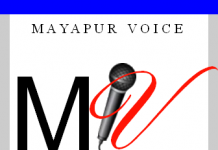As a parent you may be proud of your school-going child for being an expert at finding information online. How often do you suspect that the information obtained online may not be correct? Some people assume that if the same piece of information is found on more than one websites, it must be right. Not necessarily! Because a lot of online content is copied over again and again, if the original source itself is bogus you are at loss.
However, there are smart ways to determine whether the information retrieved is correct or not. Although chances are there that a systematically spread lie can still mislead the researcher, keeping in mind a few key principles can certainly help.
DOMO, a business intelligence company estimates that 571 new websites are created every minute! With this amount of information pouring in every minutes it becomes difficult for the web surfer to discriminate between right and wrong.

Students today don’t know a world without the Internet, but that doesn’t mean they know how to think critically about what they see online. Julie Coiro, associate professor of education at the University of Rhode Island, wrote in an Edutopia blog post that middle schoolers tend to focus more on relevance than credibility. Author and publication type are of limited importance to students, and if they do examine these elements, they can’t explain why they chose certain websites. Coiro also observed similar issues among high school and college students.
Coiro suggests strategies to help students to effectively evaluate what they see on the Internet, practice refuting what is on the Internet, and cross-check claims. In other words, becoming critical consumers of online material means more than just viewing a website. It requires knowing what qualifies as quality content and how to judge what is good material and what is not.
It is not that only school students use internet for studying. Imagine a doctor trying to find a way to cure a patient and looking for dangers involved in using a particular drug, and hitting a wrong website!
There are a few checks and balances to ensure that online content is indeed credible. To be considered as such, content will be relevant to the research question, be updated regularly with information that can be verified across other sources, and emanate from a reliable author or publisher, especially those respected in the field. It is also important to detect any personal or commercial bias from which the content may arise.
Students may not understand the differences in quality between websites. Demonstrating to students what different websites look like, and their purpose, helps them see how they should use each kind of site. Websites include personal, special interest, professional, news, and commercial sites. Determining the differences among these is also a good lesson in identifying writer bias.
Cross-checking information does help but again, the most important is to look for well reputed websites where chances of getting misled are very rare. Cross-checking can also encourage students to explore other content and evaluate it for its credibility. If students can verify that the essence of information gathered from different sites is the same, it is likely that the content is authentic.
Quoted text and full story How to Teach Students to Evaluate the Quality of Online Information | Edudemic




































